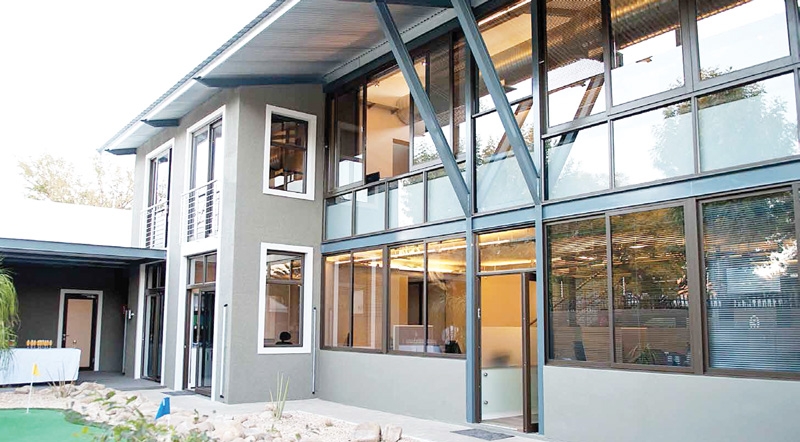
Harvesting, curing and selling dried Devil’s Claw earned Bushmen communities nearly N$2 million in 2018

Devil’s Claw, the indigenous bush with medicinal properties in its tubers, has grown into an important income earner for the Bushmen of the Nyae Nyae and N#a Jaqna conservancies. This year, the communities expect to earn nearly N$2 million from an estimated 32 tonnes of dried product.
Some 800 residents of the two conservancies regularly harvest the tubers in such a way that the plant’s survival is ensured. Furthermore, the raw product is certified through annual inspections to guarantee sustainability, traceability and quality. It is also certified as an organic product.
Certification plays a vital role in Devil’s Claw’s market value. Since 2011 when certification was first introduced, the price received by the harvesters has more than doubled.
“In an area with precious few employment prospects, this income is an important source of much-needed supplementary cash. This is a very significant way of empowering the members and especially women in the conservancies and proves that marginalised communities do not have to live from hand-outs if they are given the means to produce for themselves,” said Lara Diez of the Nyae Nyae Development Foundation.
Nyae Nyae Chairperson, Xoa//an /Ai!ae, added “Devil’s Claw is a good example of where the harvesters of the conservancy benefit directly and can decide for themselves how to use that money. Our members and especially women do not have many opportunities to earn cash and Devil’s Claw provides them with an opportunity to do this.”
N/haokxa Kaqece and Xoan Kxam/oo of Ben se Kamp settlement confirmed this, saying “It is important to harvest properly so that the plant does not die, this allows us to harvest the same plant again in a few years. The training is vital, it shows us how to process Devil’s Claw because it is a medicine and we want to produce a good quality.”

“We are happy with the price that we get because the money helps us to buy things, food, clothes and other stuff that we need. If we don’t get money from selling Devil’s Claw we will die because as women we don’t have the opportunities like men to earn income from small jobs,” they added.
Anna Mathias, a committee member of the N#a Jaqna conservancy, said “It is a medicine that goes out to help others and we are happy about this but we also want to ensure that we benefit fairly. Harvesting Devil’s Claw is difficult, it is far, you need water and food and we take great care to harvest sustainably and produce a good quality product. The income from Devil’s Claw is for many of our members the only source of income.”
The two conservancy committees stated “The fact that harvesters have been harvesting and selling Devil’s Claw in an organised manner for more than 10 years, is testament to the seriousness taken to ensure that the tubers from the plants are harvested in a sustainable manner. There is a widespread perception that large areas of both conservancies are underutilised or empty and could be utilised better by others, for example for more intensive livestock farming. However, the assertion that open or empty land is not being utilised is misleading. Ensuring the health and survival of the Devil’s Claw’s resource at a higher level requires the maintenance of the balance of the entire ecosystem of these supposedly underutilised, empty areas.”













































